Background:
Eurodyne was the original tune on my GTI when operating it with an IS38 turbocharger. Following the Cobb IS20 Stage 2 tune comparison I loaded the Eurodyne Stage 2 tune onto my GTI to see how it compares with the Cobb tunes.
Test Procedure:
Street measurements were recorded as described on the Mk7 GTI Tune Comparison page. No dyno test is being performed with the Eurodyne tune.
Test Results:
An overview of one data collection session is shown below to illustrate how the data was recorded:
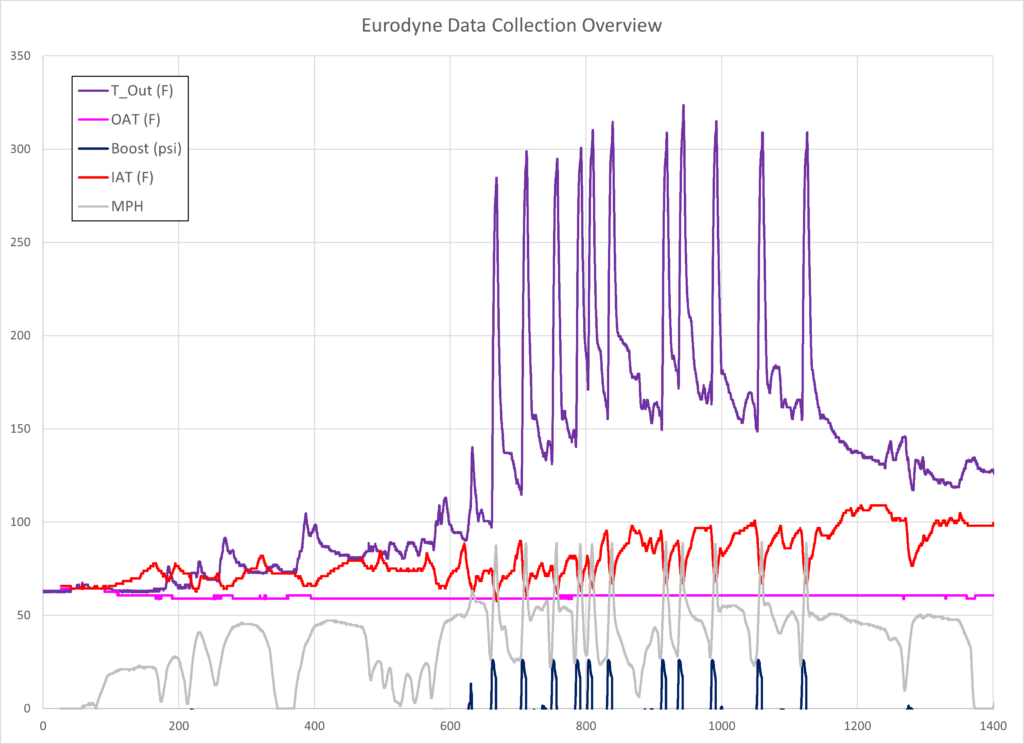
This next chart shows how effective the combination of Neuspeed front-mounted intercooler and AMS stock location intercooler are at controlling intake air temperatures.
The data samples show the difference in the intake air temperature compared with the ambient air temperature when the engine RPM is at 6,000 RPM during consecutive full boost pulls.
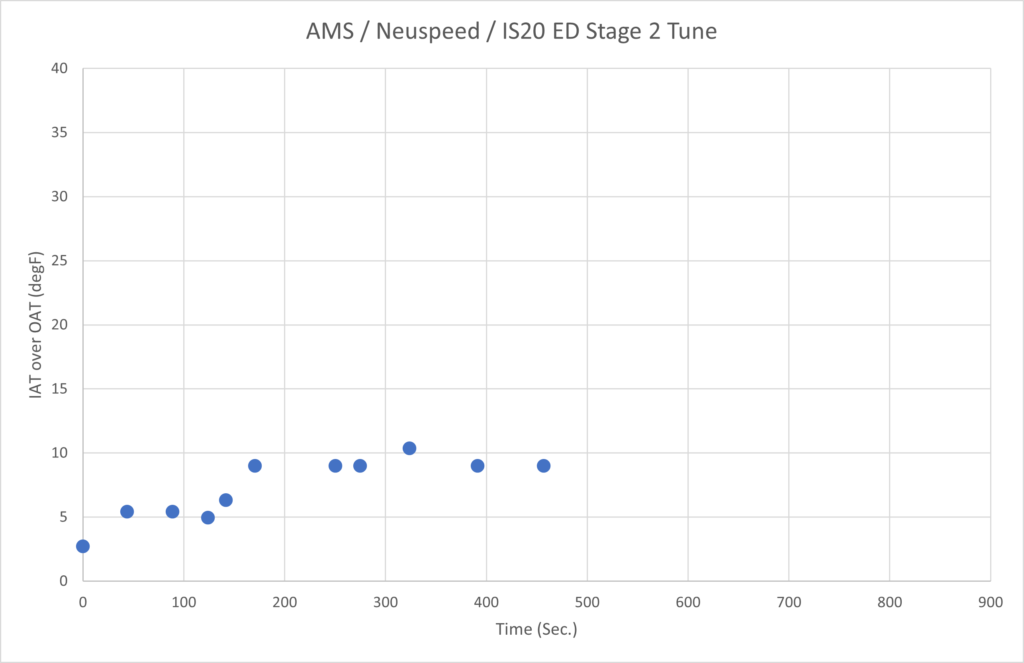
The next charts show the typical changes in engine operating variables as engine RPM increases during multiple third-gear full-throttle pulls.
The air-to-fuel ratio is shown with the red lines and the intake air temperature with the pink and purple lines.
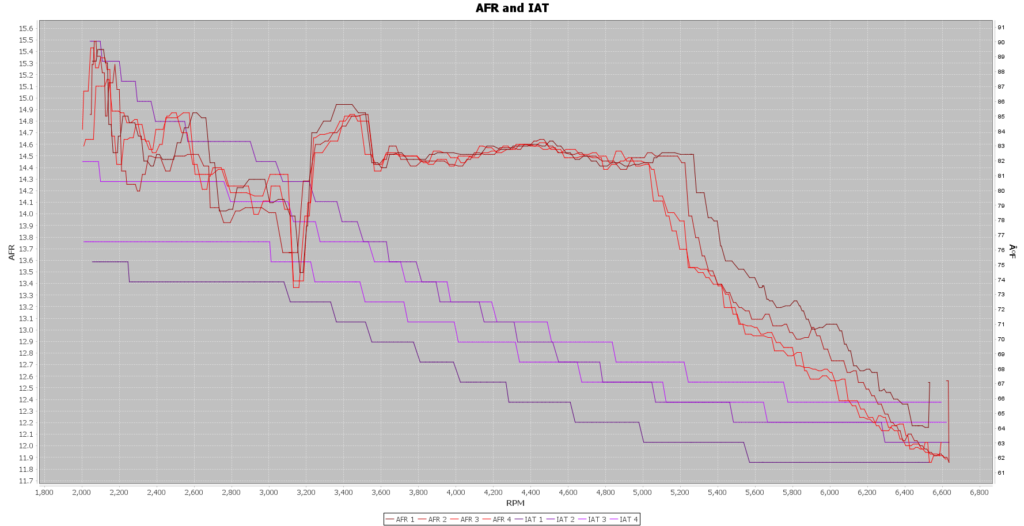
Boost (red lines) and turbocharger wastegate duty cycle (pink and purple lines):
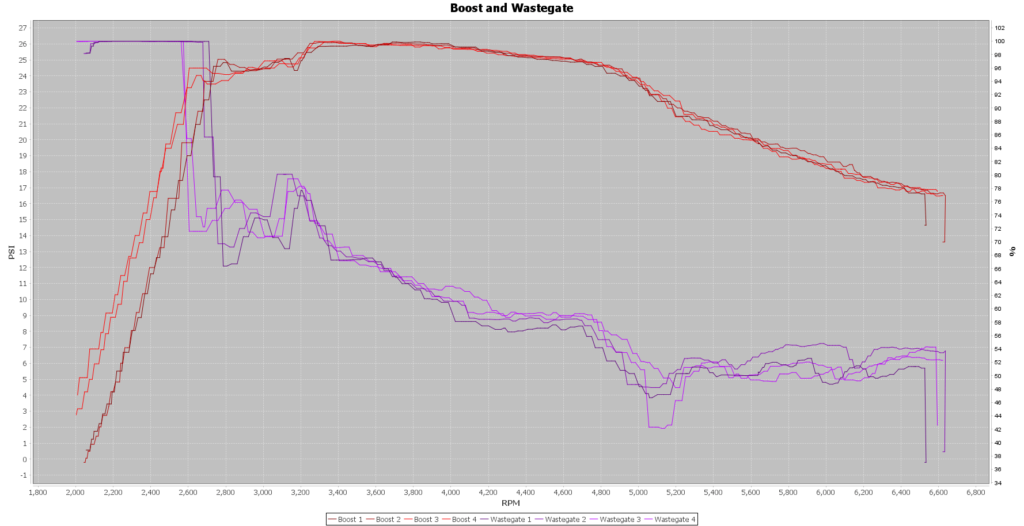
The Ignition Timing Advance (red lines) and occurrences of ignition timing retard (yellow, green, and pink lines):
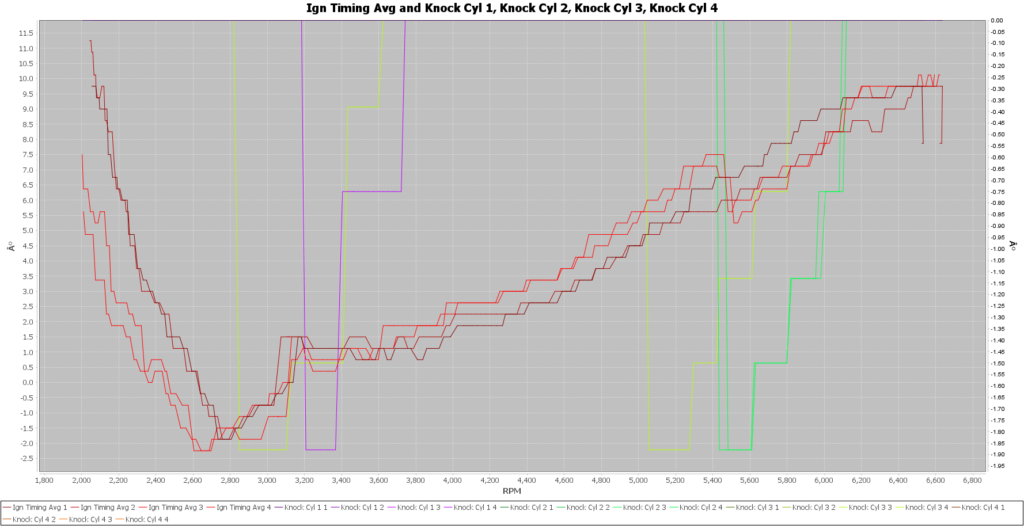
Low-pressure fuel pump duty cycle (red lines) and fuel rail pressure (pink and purple lines):
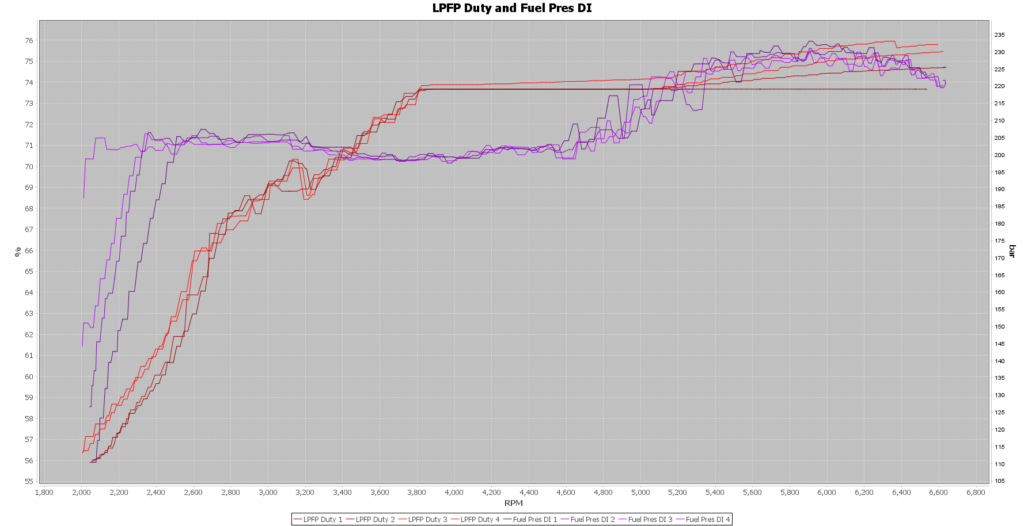
The next chart shows an overview of a series of pulls with a row assigned to each engine cylinder.
The red line is the boost pressure and the white lines are occurrences of ignition timing retard.
This data is used to calculate a Knock Retard Percentage (KR %) which is discussed in detail in the Stratified OTS IS20 Tune Datalog Refinement post in the section titled “KR Percentage”.
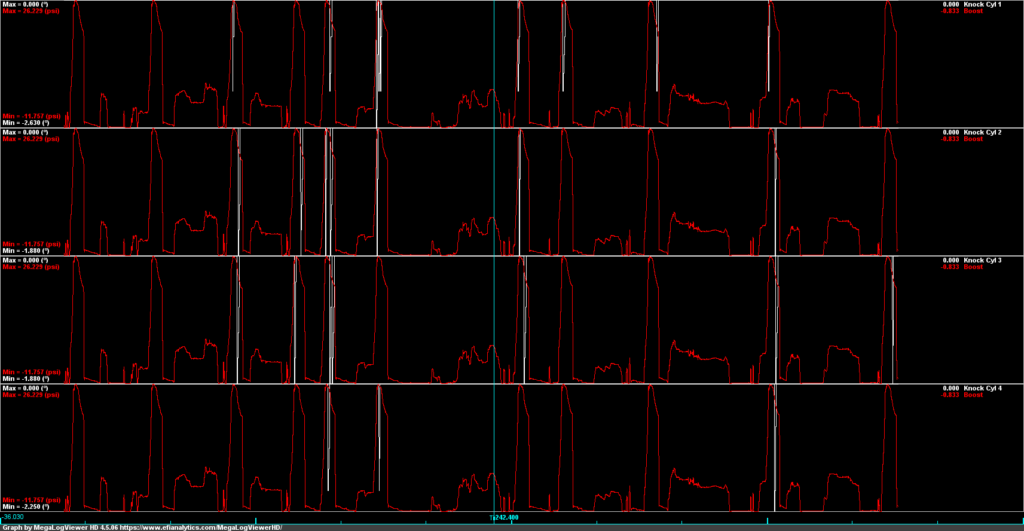
This value is determined by taking the number of pulls and multiplying it by the number of cylinders (4). This is the maximum number of timing pull occurrence opportunities.
The observed number of timing pull occurrences divided by the number of opportunities produces the percentage value.
Only one timing retard event for a pull for a cylinder is recorded. This means that if during a single pull there is an instance of timing reduction on cylinder #1 at 3500 rpm and another occurrence at 5000 rpm, this is recorded as a single timing pull occurrence for this cylinder during that pull.
Over a total of 23 pulls, a portion of which is shown above, an occurrence of timing reduction during a pull was recorded during 53% of opportunities.
The next chart shows a subset of pulls that were made to calculate an estimated peak wheel horsepower.
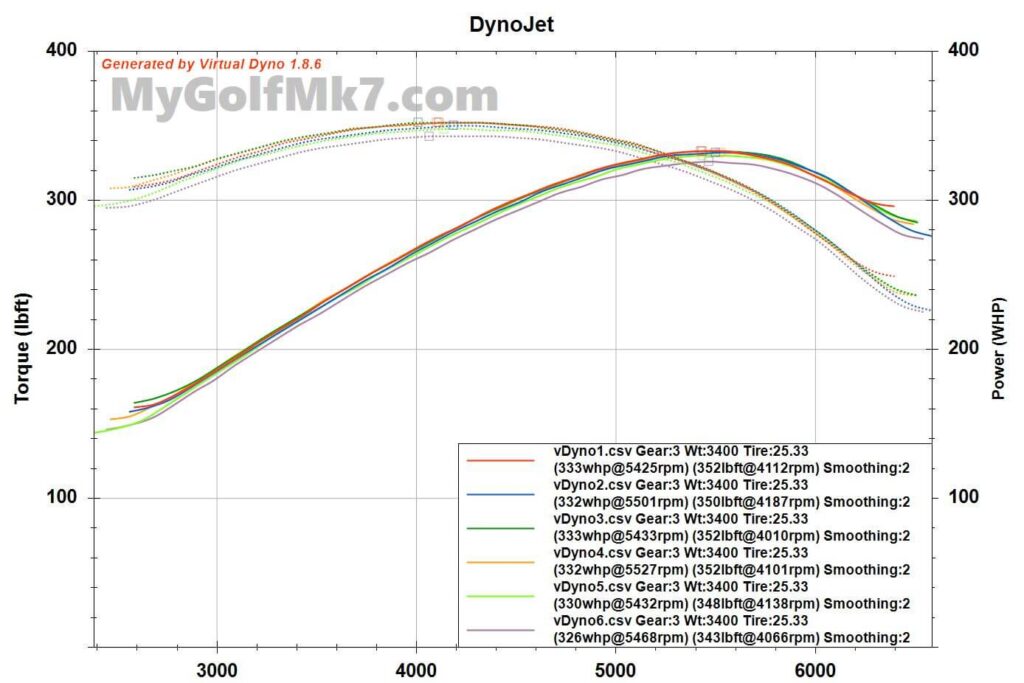
Aftermarket Tune Comparison:
The following charts show a comparison of the Eurodyne tune with the Cobb-based aftermarket tunes that I previously tested.
The number in parenthesis (x) is the number of individual samples making up the average.
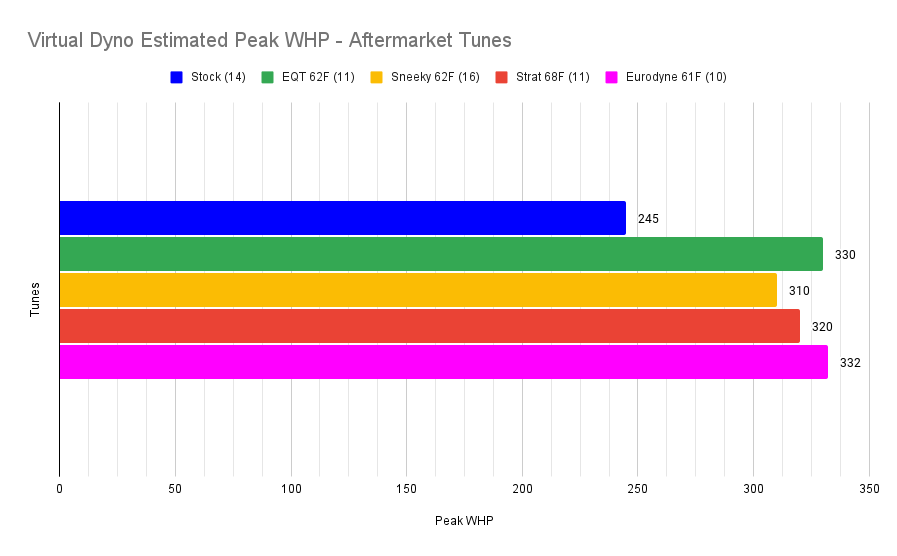
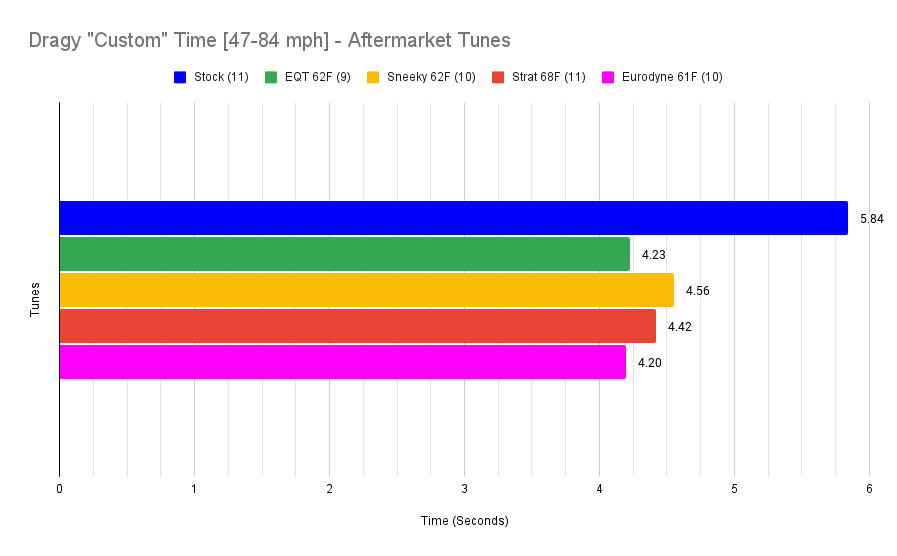
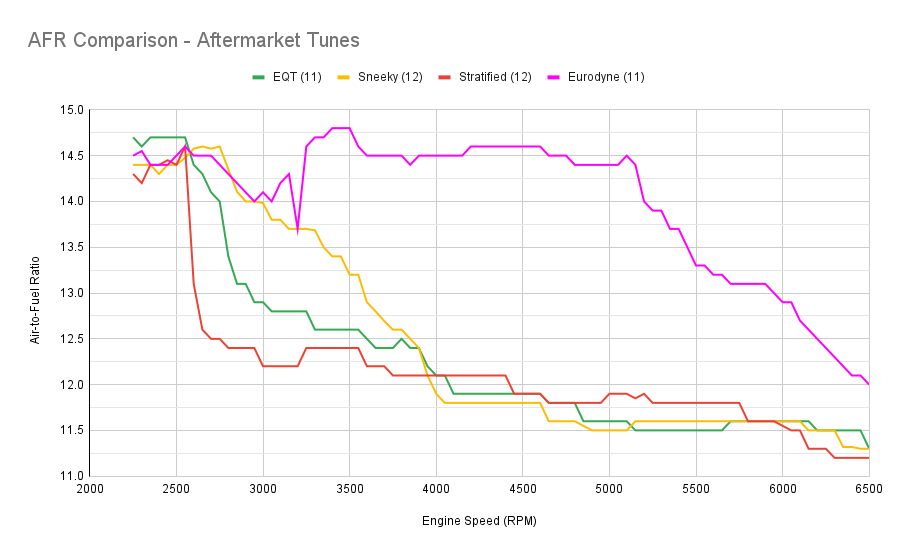
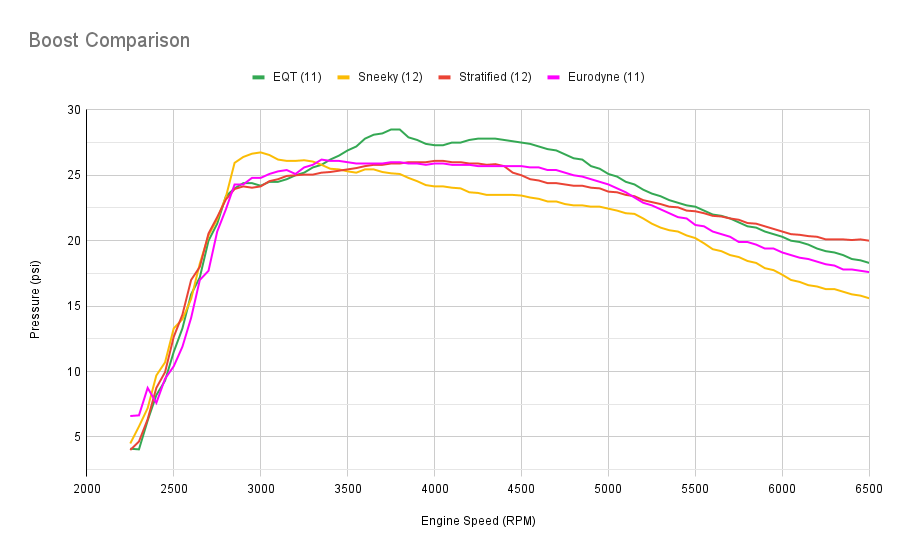
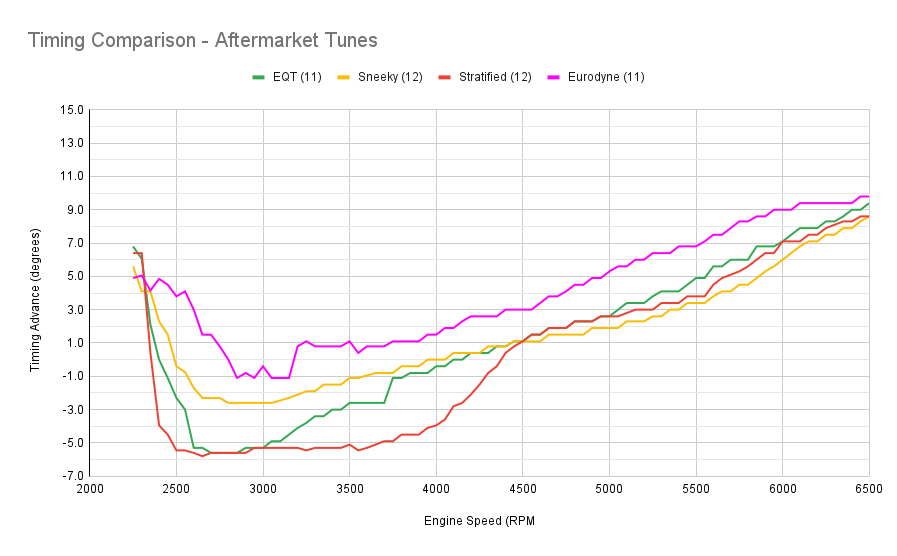
The next chart shows trends between all of the tunes that have been tested.
The average boost pressure that the tunes operate at between 2900 to 5000 rpm is plotted along with the Knock Retard percentages.
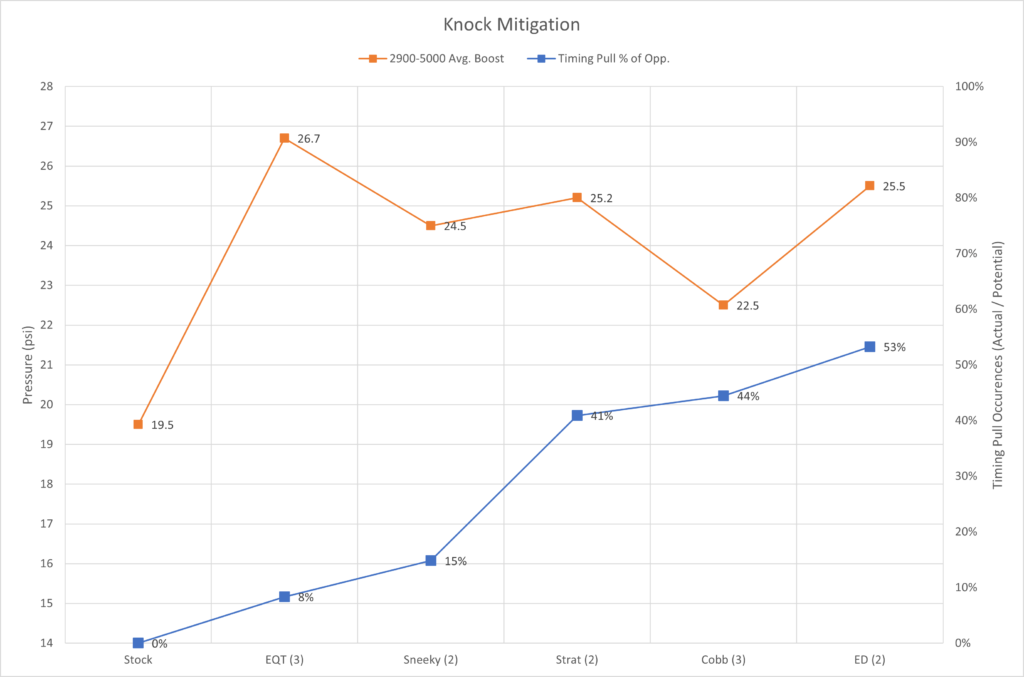
Note: I am aware that other factors, in addition to boost pressure, contribute to the KR% (Timing Pull % of Opp.), hence the reason for including the data shown before this chart.
The purpose of this chart is to be used as a predictor for Knock Mitigation manipulation by a tune. When testing with the Cobb-based tunes it was observed that Cobb’s Stage 2 and Stratified mirror OEM Knock Mitigation while Sneeky raises the Knock threshold during the initial boost onset and EQT raises the Knock threshold everywhere that boost pressure is increased.
An example of this comparison with Cylinder 1 is shown below.

By looking at the Cobb-based tunes and their occurrences of timing pull these results are used to predict if the Eurodyne tune is “numbing” the Knock sensors as EQT, and to a lesser extent, Sneeky does.
Based on the Eurodyne tune showing occurrences of Ignition Timing Retard around 53% of the opportunities it is unlikely that Eurodyne is significantly numbing the knock sensors.
Conclusions:
The Eurodyne Stage 2 IS20 tune for the Mk7 GTI was tested to record engine and vehicle performance variables to compare with several Cobb-based aftermarket tunes.
The Eurodyne tune produced faster acceleration times over the custom time interval as measured by a Dragy data logging device.
The Eurodyne tune also produced the highest estimated peak wheel horsepower.
Note: Both of these values are less than their respective Minimum Mean Difference of Interest (Effect Size described in the Power Analysis) when compared to the second-highest-ranking values.
A comparison with Cobb-based tunes suggests that the Eurodyne tune is not “numbing” the Knock sensors which should maintain OEM-like Knock mitigation.
